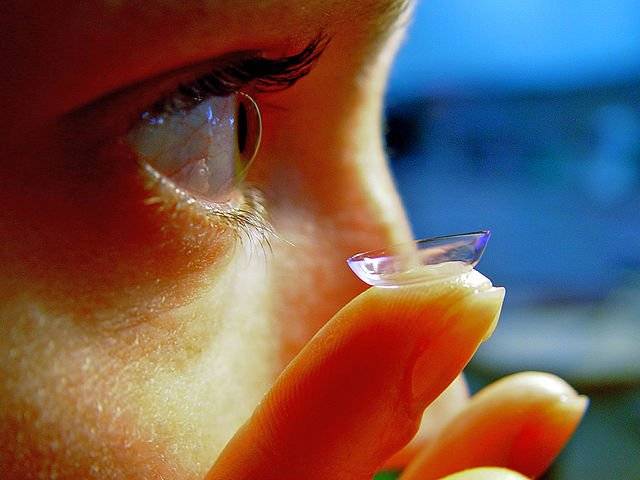A couple of years ago Google initiated a project to make smart contact lenses for measuring glucose levels. A healthcare company, Novartis, stepped in to license this technology. Google and Novartis soon announced they would team up to develop smart contact lenses for diabetes, allowing patients to measure glucose from their tears using a miniaturized sensor and a wireless chip. In July, Novartis’ Alcon eye care division inked a deal with Google to license its “smart lens” technology for all ocular medical uses, opening the door for more collaboration. In this post we tell you how this technology works. The smart contact lenses track your glucose levels and send that information to a device wirelessly, making the task of monitoring sugar levels far easier. The contact lens analyses tears to measure the wearer’s glucose levels non invasively, which allows the diabetic to get a blood-sugar reading without having to draw blood.
However, Samsung has stretched the smart contact lenses concept further ahead by providing a technology that combines features of Google glasses and the Google smart contact lens. A recent patent application by Samsung, published in South Korea, shows a contact lens equipped with a tiny display, a camera, an antenna, and several sensors that detect movement and the most basic form of input using the blinking action of the eyes. The display projects images directly into the eye of the wearer. An external device, such as a Smartphone wirelessly communicates with the contact lenses and provides the required processing capabilities to support the functionality of the smart lenses. According to the patent application, the primary reason for the development of smart contact lenses is the limited image quality that can be achieved with smart glasses. Lenses can provide a more natural way to provide augmented reality than smart glasses. The lens could overlay internet-connected services directly into the user’s line of sight. The camera in the contact lens is capable of discreetly – even covertly taking photographs. However, usage of such technology could raise debates on invasion of privacy of persons or objects.
Interestingly, at this stage it seems Samsung is more interested in carrying out research rather than commercializing the technology into a product. As is seen very often with Samsung, its innovation and forever growing arsenal of technology have changed the rules of the game time and often. Once the smart contacts are made available in the market, they would certainly fly off the shelves faster than anything else that we have ever seen.
Authored by Sanjeevani Patil
Image source / attribution here, this image is CC BY-3.0



